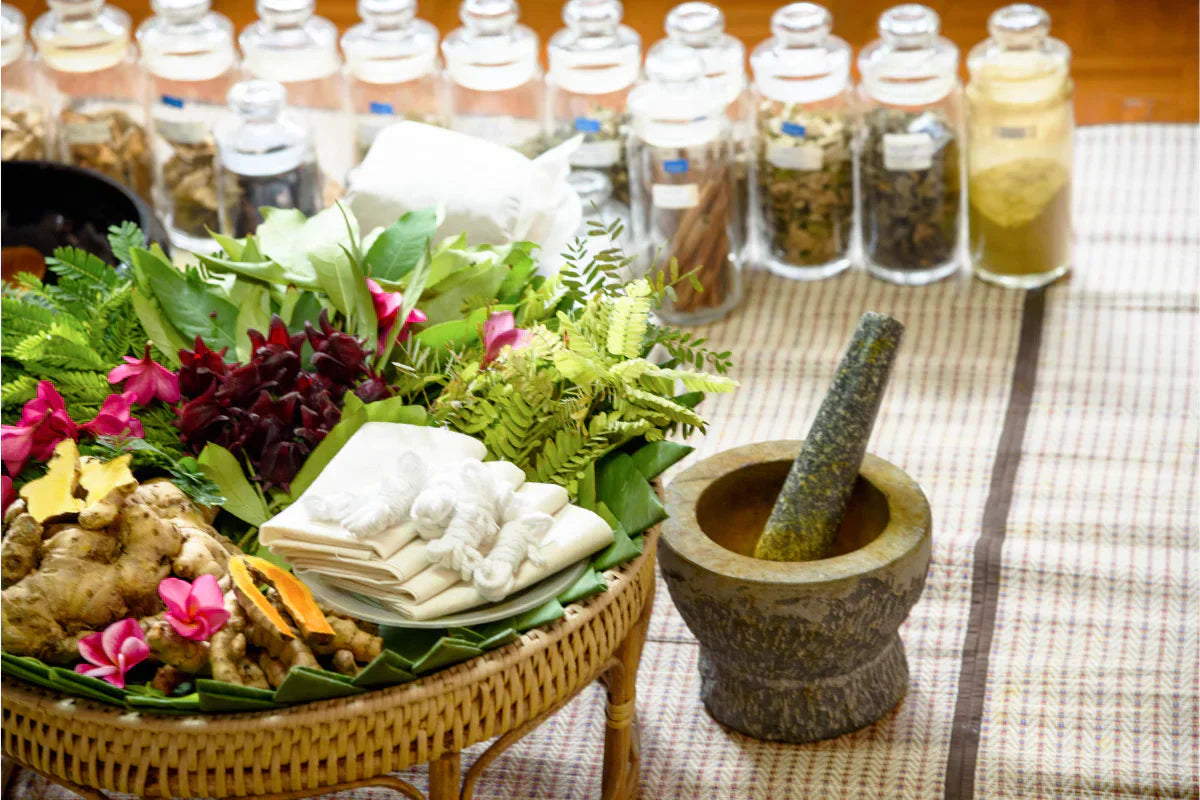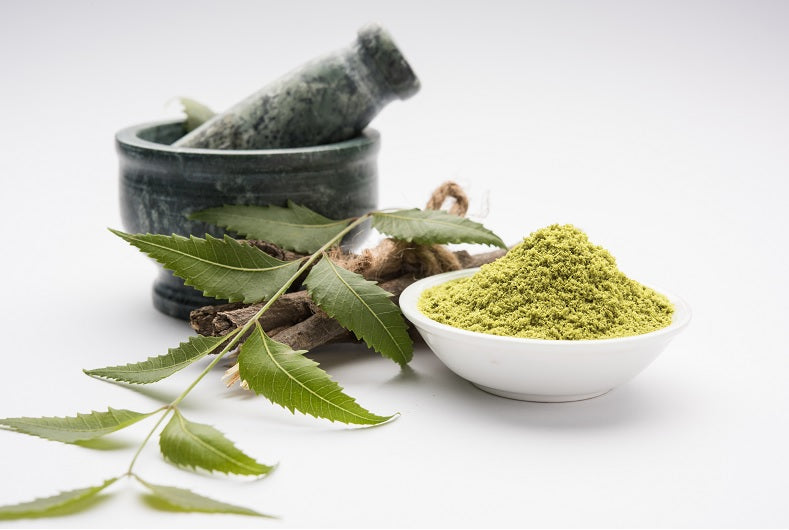
Understanding Kapha Dosha: Symptoms, Natural Remedies & Ideal Diet
27 Oct, 2025What Is Kapha Dosha? Understanding Its Role in Ayurveda वायु: पित्तं कफश्चेति त्रयो दोषाः समासतः ...
Read more
वायु: पित्तं कफश्चेति त्रयो दोषाः समासतः ॥ विकृताऽविकृता देहं घ्नन्ति ते वर्त्तयन्ति च ॥
(Sushruta Samhita, Sutra Sthana 21/7)
“Vata, Pitta, and Kapha are the three Doshas of the body; when in balance, they sustain life, but when imbalanced, they cause disease.”
Among the three Ayurvedic doshas, Vata, Pitta, and Kapha, the Kapha Dosha represents stability, strength, and nourishment, symbolising the elements of Earth and Water. The bio-energies represented by the dosha are believed to determine the body’s structure, lubrication, and cohesion. When Kapha is in harmony, it brings about compassion, patience, vitality, and energy. When the optimum balance is disturbed, lethargy, weight gain, congestion, and mental dullness are the fallouts.
Read the complete Guide to Ayurveda doshas—>
Kapha-dominant individuals are naturally endowed with strength, endurance, and resilience. Their body type tends to be solid and well-built, capable of sustained effort and recovery.
Build: Medium to heavy frame with strong bones and muscles; they gain weight easily but lose it slowly.
Skin: Soft, cool, and slightly oily with a radiant glow when balanced; can become pale or greasy when aggravated.
Hair: Thick, lustrous, and wavy, reflecting the nourishing, moist qualities of Kapha.
Eyes: Large, calm, and attractive; convey warmth and empathy.
Digestion: Slow but steady; prefers regular mealtimes and lighter foods.
Energy: Consistent and long-lasting, though prone to sluggishness if inactive or over-rested.
Tolerance: Naturally resistant to illness and stress; strong immune system and endurance.
Discover your unique mind-body type — Take the Ayurveda Dosha Quiz to find your perfect balance.
The mind of a Kapha type mirrors the serenity and stability of water. They approach life with patience and deep emotional intelligence, making them loyal companions and thoughtful decision-makers.
Nature: Calm, compassionate, forgiving, loyal, and affectionate, driven by care rather than ambition.
Mental State: Grounded and composed, but may become complacent or overly attached when Kapha is excessive.
Behavior: Prefers routine, comfort, and familiarity; dislikes sudden changes or emotional upheaval.
Sleep: Enjoys deep, restful sleep and often needs gentle stimulation to stay energized.
Work Ethic: Steady, dependable, and consistent; performs best with structure and clarity.
Imbalance Signs: Emotional attachment, possessiveness, laziness, or procrastination may appear when Kapha is aggravated.
According to Sushruta Samhita, Kapha Prakriti individuals are described as:
“Subhagaḥ priyadarśano madhurapriyaḥ kṛtajño dhṛtimān saḥiṣṇuḥ balavān śīlagrahaṇī.”
meaning they are pleasant, kind, sweet-natured, grateful, and patient, blessed with strong bodies and steady minds.
Even though they are emotionally grounded, Kapha individuals must keep stimulating their body and mind to prevent stagnation and laziness.
When Kapha accumulates beyond its natural balance, it leads to Ama (toxic buildup) and sluggishness in both body and mind. Ayurveda texts like Sushruta Samhita and Ashtanga Hridaya describe the following Kapha imbalance symptoms:
Heaviness and stiffness (Gauravam, Sthairyam): A sense of weight and rigidity in the body, especially in the limbs or joints.
Excessive sleepiness (Atinidrata, Tandra): Feeling drowsy even after adequate rest; difficulty waking up early.
Weight gain and obesity (Sthoulya): The slow metabolism of Kapha leads to fat accumulation and water retention.
Cough and congestion (Kasa, Shwasa): Common signs of excess mucus; prone to colds, sinusitis, and respiratory issues.
Coldness and whitish complexion (Shaityam, Shuklata): Skin may appear pale, cold to the touch, and oily.
Sluggish digestion (Agnisadana): Reduced appetite, bloating, and heaviness after meals due to weakened Agni (digestive fire).
Depression and dullness (Avasada): A feeling of heaviness or emotional fog; lack of enthusiasm for daily activities.
Attachment and resistance to change: A strong desire to hold onto people, possessions, or habits, even when they no longer serve well-being.
Slow comprehension: Delay in processing thoughts or making decisions; tendency to cling to the familiar.
Lethargy and lack of motivation: Reduced drive or inspiration to act, often leading to procrastination and stagnation.
Excess dryness (Rukshata), burning sensation, thirst, fatigue, insomnia (Anidra), and body aches occur when Kapha becomes deficient.
Kapha tends to accumulate during late winter and early spring, which is why Ayurveda recommends seasonal cleansing (Ritucharya) during this time.
To balance Kapha dosha, lightness, warmth, and movement are essential. Ayurveda encourages daily habits (Dinacharya) that awaken energy and reduce heaviness.
Wake up before sunrise (Brahma Muhurta): Avoid oversleeping to prevent Kapha buildup.
Dry brushing (Garshana): Stimulates circulation and removes sluggishness.
Abhyanga (Oil Massage): Use warm sesame oil or mustard oil for an invigorating massage.
Exercise daily: Brisk walking, jogging, Surya Namaskar, and dynamic yoga help maintain lightness and vitality.
Avoid day naps and heavy night meals, as they increase Kapha’s cool, dense qualities.
Keep yourself mentally active, read, learn, or socialize.
Practice energizing pranayama like Bhastrika and Kapalabhati to clear respiratory blockages.
Engage in uplifting activities that counter inertia and promote inspiration.
Diet plays a central role in Kapha dosha treatment. The goal is to bring lightness, warmth, and dryness through the right food choices.
Favor light, warm, and gently spiced meals that stimulate Agni (digestive fire) and reduce sluggishness. Include the following:
Grains: Barley, millet, ragi, and quinoa are dry and light grains that reduce water retention and support metabolism.
Vegetables: Leafy greens, bitter gourd, bottle gourd, asparagus, broccoli, and pumpkin cleanse toxins (Ama) and balance Kapha’s heaviness.
Fruits: Apples, pomegranates, pears, and papaya light, astringent fruits that energize without adding excess moisture. Avoid overly sweet fruits like bananas or mangoes in large quantities.
Spices: Ginger, turmeric, cumin, black pepper, fenugreek, clove, and cinnamon are warming spices that kindle digestion, burn Ama, and stimulate circulation.
Beverages: Prefer lukewarm water throughout the day, or sip on herbal infusions such as Tulsi tea, cinnamon-clove water, or Maharishi Ayurveda Kapha Herbal Tea to promote lightness and vitality.
To prevent the accumulation of mucus and toxins, limit heavy, cold, and oily foods that increase Kapha’s sluggish nature.
Avoid:
Cold, heavy, and oily foods: Fried snacks, creamy sauces, excessive dairy, sweets, and frozen foods increase stagnation and dullness.
Excessive salt and sugar: These enhance water retention and lethargy.
Red meat and refined flour products: They slow down metabolism and contribute to heaviness.
Carbonated and chilled drinks: These suppress digestive fire and aggravate Kapha imbalance.
A Kapha diet should emphasize pungent, bitter, and astringent tastes (Katu, Tikta, Kashaya Rasa) and limit sweet, sour, and salty flavors.
Ayurveda offers simple, natural home remedies to balance Kapha and restore vitality:
Ginger-Honey Tea: A classic Kapha-reducing drink that boosts metabolism and clears mucus.
Steam Inhalation: Add a few drops of eucalyptus or peppermint oil to boiling water to relieve sinus congestion.
Trikatu Churna: A blend of ginger, black pepper, and long pepper — excellent for digestion and weight management.
Honey in Warm Water: One teaspoon daily acts as a natural Kapha detoxifier (avoid heating honey).
Nasya Therapy: Applying Anu Taila or herbal nasal drops clears accumulated Kapha from the head region.
To support Kapha balance and energy, Ayurveda prescribes formulations that promote agni (digestive fire), detoxification, and circulation.
A warming, invigorating blend that combines herbs like ginger, cinnamon, clove, and tulsi. It helps counter sluggishness, supports clear breathing, and energizes the mind without caffeine. Ideal during cold weather or early mornings to awaken Agni gently.
A classical Ayurvedic blend of dry ginger (Shunthi), black pepper (Maricha), and long pepper (Pippali). It’s one of the best-known remedies for stimulating digestion, clearing Ama (toxins), and improving metabolism. Regular use under guidance helps relieve heaviness and congestion.
A natural mineral resin known for its rejuvenating (Rasayana) properties. It enhances energy, stamina, and metabolic activity, making it beneficial for those with Kapha-induced fatigue, sluggishness, or weight gain.
Read the complete guide to Shilajit Benefits, Uses and More—>
Renowned for its detoxifying and fat-metabolizing action, Guggul helps manage cholesterol, joint stiffness, and water retention. It’s a powerful Kapha-balancing herb that promotes healthy metabolism and circulation.
In small, regulated quantities, raw honey acts as a natural Kapha-reducing agent. It helps liquefy mucus, supports digestion, and enhances the absorption of herbal formulations. (Note: Never heat honey; it should always be taken raw or with warm, not hot, water.)
Balancing Kapha is not only about food or herbs; it’s about reigniting motivation and movement in all aspects of life.
Diet: Favor light, warm, and spicy meals to enhance Agni (digestive fire).
Lifestyle: Stay active, avoid oversleeping, and maintain a stimulating daily routine.
Emotional Balance: Avoid over-attachment or comfort-seeking; practice non-possessiveness.
Environment: Prefer warm, bright, and dry surroundings.
Seasonal Detox: Spring is the best time for Panchakarma (Vamana therapy), the traditional Kapha-cleansing treatment.
By aligning your life with Dinacharya (daily routine) and Ritucharya (seasonal routine), you prevent Kapha accumulation and maintain clarity, strength, and emotional resilience.
When Kapha Dosha is balanced, you experience steady energy, strong immunity, and emotional calm. Ayurveda teaches that balance isn’t about deprivation but harmony with your Prakriti.
Through mindful eating, regular movement, and herbal support, you can transform heaviness into vitality.
Restore your inner balance.Explore our Kapha Dosha Collection and discover Ayurvedic solutions for renewed energy and vitality.
The spring season and early morning (6–10 AM) are Kapha-dominant. Engaging in active routines and light diets during these times naturally helps eliminate excess Kapha.
Yes. Kapha’s heavy, slow nature can lead to weight gain, especially when consuming excess sweets, salt, or fatty foods combined with low physical activity.
Kapha types benefit from stimulating workouts like running, aerobics, dancing, and hot yoga that generate heat, improve metabolism, and reduce sluggishness.
Kapha is a natural bio-energy, not a disease. It cannot be “cured” but can be balanced through a consistent diet, lifestyle, and herbs.
Yes, many people have a dual-dosha constitution (Kapha-Pitta). This type combines Kapha’s steadiness with Pitta’s intensity and requires a personalized, moderate approach to balance both.
What Is Kapha Dosha? Understanding Its Role in Ayurveda वायु: पित्तं कफश्चेति त्रयो दोषाः समासतः ...
Read moreIntroduction – Ayurveda and the Science of Doshas In Ayurveda, health is not merely the absence ...
Read more Guide to Immunity
Guide to Immunity
 Featured Articles
Featured Articles

Are you struggling with your oral health because of your eating habits? Are toothaches becoming your new normal because you have not been brushing well? Is eating ice cream a big NO, as you have brushed a little too much? A lot of you have been made to believe that your oral issues emanate from what you are doing wrong or not doing the right thing. What if we tell you that you have been approaching this all wrong and trying to solve the problems topically instead of addressing the root cause? Do you ever think about the real reason for these significant dental issues?
Ayurveda helps you focus on the fundamentals and identify the root cause. It is the science of treating the underlying imbalances and correcting the cause in a completely natural and effective way. Among its numerous health benefits, when it comes to oral health, Ayurvedic Toothpaste is a game-changer for preserving strong and healthy teeth. A natural and effective alternative to the chemical-laden equivalents and a beneficial synergy of herbs that help in holistic dental care. Surprising, right!? Well, read on to turn your surprise into a new belief!


नित्यमध्मान तां तांस्तु व्याधिभिश्च विवर्जितः।
रसैश्च दन्तमूलानां रूक्षैराचाम्य विक्रियाम्॥
Meaning: Regularly cleaning your mouth makes your teeth and gums healthy and prevents diseases.
The Charaka Samhita mentions the importance of oral care in overall health. This is more than just information from ancient scriptures; much research has validated the role of a healthy mouth in a healthy body. A 2022 study in Frontiers of Microbiology highlighted this critical link: an imbalance in the oral microbiome causes periodontal disease and promotes cardiovascular disease development.
Wondering how? Saliva is the first fluid that is secreted during digestion. It lubricates the tongue and oral cavity and ensures that the whole digestive tract stays lubricated, along with the chewed food passed down to the stomach. It carries all microbes into your gut and is the most crucial link between oral and overall health
Saliva also contains some antimicrobial proteins and enzymes that keep harmful microorganisms from growing while ensuring the good ones thrive. However, any saliva production or composition imbalance can affect the oral microbiota. This could be due to poor oral hygiene, an unhealthy diet, or systemic health issues.
This imbalance can have dire consequences for oral health, such as dental caries, gum issues, and infections. Moreover, balanced saliva helps lubricate and break down food for easy digestion and ensures that teeth get essential minerals to maintain and repair themselves.

Dantadhaawan is an ancient Ayurvedic oral hygiene practice that involves using herbal twigs, AKA ‘‘Datoon’’, to clean teeth and gums. Commonly used twigs include those from the neem, babool, and liquorice plants. These twigs have antimicrobial properties that help maintain oral hygiene.
According to the Shadrasa (six tastes) in Ayurveda, every herb has a Rasa (dominant taste) that determines its properties and actions.
An ideal toothpaste must contain Katu, Tikta, Kashaya, and Madhura Rasa, each of which positively impacts maintaining the health of our oral cavity.
Let’s uncover the properties of these essential Rasas to know more:
|
Rasa |
Action |
|
Katu (Pungent) |
It deeply cleanses the oral cavity |
|
Tikta (Bitter) |
Antibacterial & antiseptic action |
|
Kashaya (Astringent) |
Provides pain relief |
|
Madhura (Sweet) |
Strengthens the gums & teeth |
You see, an Ayurvedic toothpaste not only cleanses your teeth but also gives Bala (strength) through the properties of the natural Dravyas (herbs) used in it.

It may sound complex, but formulating toothpaste at home is as easy as making a face pack! All you need is 10 grams of dry leaves or powders of neem, mulethi, jamun, and amalaki. Grind or mix them, and your dry toothpaste powder is ready! During every brushing session (preferably morning and evening), mix it with your *Dosha-appropriate adjuvants. Vata *Dosha* can mix sesame oil, Pitta *Dosha* can mix ghee, and Kapha *Dosha* can mix honey/mustard oil, and your quick, healthy toothpaste is ready!
If you’re a busy bee, not interested in DIYs, or find it difficult to source these ingredients, don’t worry! We have Maharishi Ayurveda Ayurdent Toothpaste. It is your one-stop solution to all your oral problems. It’s a unique formulation that works on your saliva and is suitable for all body types, irrespective of the Doshic predominance.
It contains neem for cleansing, triphala for balancing, and meswak & ginger for stimulating saliva. Ayurdent promotes holistic oral health naturally and provides protection from major oral problems like cavities, plaque, bleeding gums, toothache, sensitivity, and bad breath. It contains the goodness of 20 Ayurvedic ingredients and is free from SLS and fluoride. Certified by COSMOS Natural, it stands out for its authenticity compared to other Ayurvedic and herbal toothpaste. This innovative, non-foaming formula is a must-try in the category.
 Recent Blogs
Recent Blogs


As per Ayurveda, no two individuals are alike. Maharishi Ayurveda offers personalised treatment for each individual at all touch-points. Consult our expert Vaidyas to get root cause-based personalised treatment from the comfort of your home
CONSULT VAIDYA
